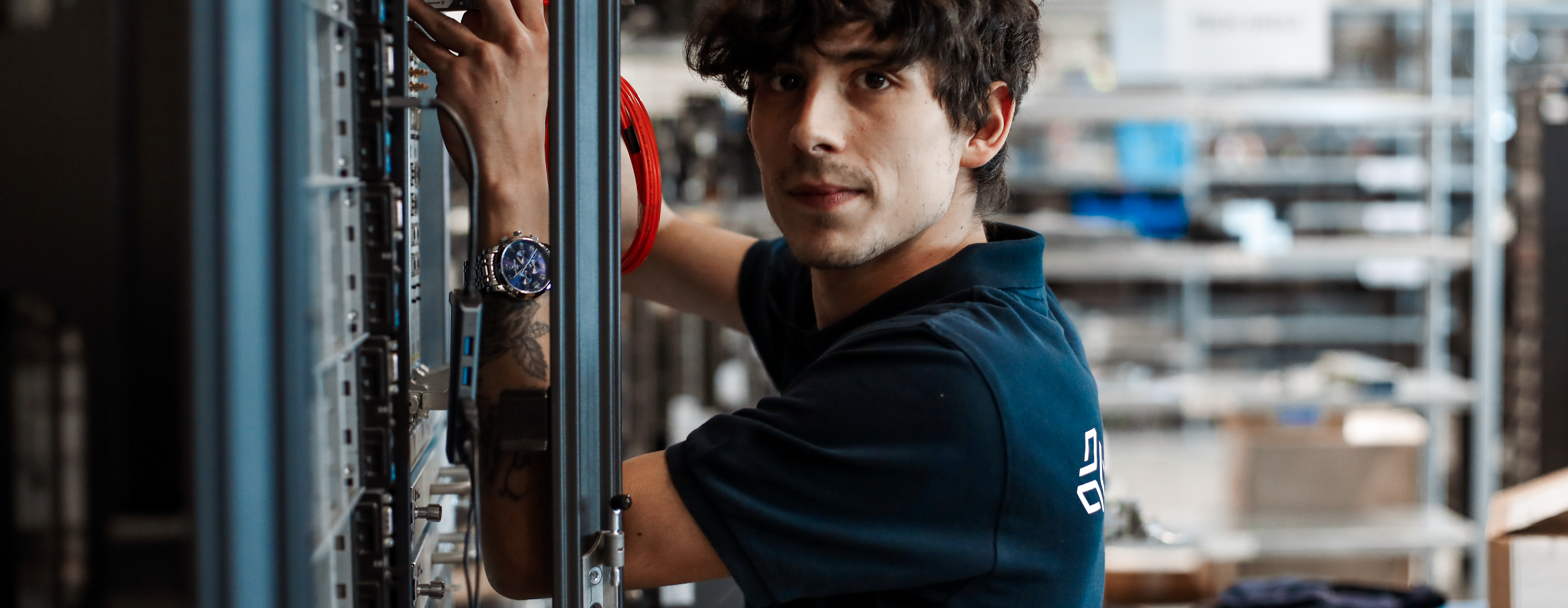
When designing a fibre optical network, many engineers base their choice of transceivers on the distance indication of a module and the actual length of the fibre connection itself. This can turn out to be a false assumption. Even if -under perfect circumstances- an ER transceiver will reach 40 km of distance, reality often looks very different: we always have to consider insertion losses, fibre losses, mux/demux losses and patch losses as key factors as well.
Imagine the following: on a beautiful sunny day, after a full English brekkie, you’re riding your bike, all alone, along a perfectly straight, 40 km long and freshly tarmacked bike lane to the farmers market. In these perfect conditions you will easily reach your goal on the other end and still have enough energy to do your shopping.
Now imagine you’ve eaten the same breakfast, but the 40 km long road is cobblestoned, has huge potholes every 2 metres and winds up a steep hill in serpentines. It is a very rainy day, and you’re pedalling against gale force winds. Even though the distance is exactly the same, there is a good chance you might get stuck along the way; and if you manage to arrive at your target at all, you’ll be far too exhausted to still do your week’s shopping.
The transceiver’s power budget can be compared to the energy provided by your breakfast: the sturdier your breakfast, the bigger the distance you’ll be able to cycle. For a fibre optic transceiver that means: the higher its power, the farther the light will travel over the fibre. Yet, just as the number of calories alone will not suffice to calculate the distance you will be able to cycle, the same applies to transceivers: we need to offset the available power against all hindrances along the road.
+ Transceiver’s power budget
– fibre losses
– mux/demux losses
– connector, patch and splice losses
___________________________________
= TOTAL optical link budget
If the total shows a positive number, the signal will be strong enough to reach the other side and produce a link-up. If it is negative -meaning the sum of the losses exceeds the transceiver’s power budget- the signal will be lost and no link-up will be achieved.
Let’s look at a practical example:
15 dB – 14 dB = 1 dB
This means we’re left with a margin of 1 dB, therefore a link-up is achievable.
Again, we are using our formula:
15 dB – 18 dB = -3 dB
We are now dealing with a negative link budget: using the same SFP+ ER on an identical distance, no link-up will be achieved!
CONCLUSION: when choosing a transceiver for your fibre optical link, always make sure to check the total link loss against the transceiver’s power budget and leave a margin for potential extra losses in the future (e.g. splices and fibre bends)!
Do you want to stay updated on all the latest announcements? Enter your full name and e-mail here:
Grafenauweg 8
6300 Zug, Switzerland
[email protected]
+41 41 561 70 77
Copyright 2023.